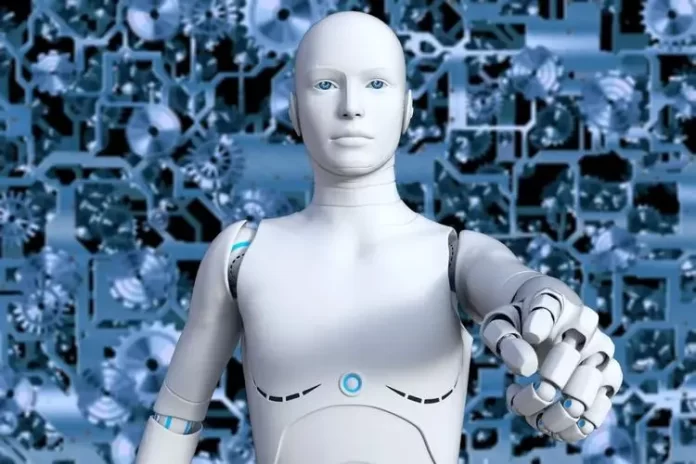On November 2nd, the Ministry of Industry and Information Technology issued the “Guidance for the Innovation and Development of Humanoid Robots” (referred to as the “Guidance”), aimed at promoting the high-quality development of the humanoid robot industry, empowering the new industrialization at a high level, and providing strong support for the construction of a modern industrial system.
The Ministry of Industry and Information Technology stated that humanoid robots integrate advanced technologies such as artificial intelligence, high-end manufacturing, and new materials. They are expected to become disruptive products following computers, smartphones, and new energy vehicles. They have significant development potential and broad application prospects, making them a new track for future industries. China’s humanoid robot industry has laid some groundwork, but there are still deficiencies in key basic components, operating systems, complete products, leading companies, and industrial ecology. Therefore, it is necessary to strengthen policy guidance, pool resources to drive key technological innovations, and cultivate new quality productivity.
Two-Stage Development Goals
The “Guidance” outlines two-stage development goals: by 2025, the innovation system for humanoid robots should be initially established, with breakthroughs in key technologies such as the “brain,” “small brain,” and “limbs.” This should ensure the safe and effective supply of core components. Complete products should reach international advanced levels and achieve mass production. They should also demonstrate applications in special, manufacturing, and civil service scenarios while exploring effective governance mechanisms and methods. The plan aims to nurture 2-3 globally influential ecological companies and a batch of specialized and innovative small and medium-sized enterprises. Additionally, it seeks to create 2-3 industry development clusters and foster new businesses, models, and formats.
By 2027, the innovative capabilities of humanoid robot technology should significantly improve, creating a secure and reliable industrial supply chain system. An internationally competitive industrial ecosystem should be established, and comprehensive strength should reach a world-leading level. The industry should accelerate its development on a large scale, diversify its application scenarios, deeply integrate related products into the real economy, and become a crucial driver of economic growth.
Expanding Humanoid Robot Application Scenarios
The “Guidance” specifies five areas of tasks:
In terms of breakthroughs in key technology, the “Guidance” proposes that, building upon mature technology in the field of robotics, there should be a focus on breakthroughs in key technologies related to the “brain,” “small brain,” and “limbs” of humanoid robots. The first aspect is to develop the “brain” of humanoid robots based on large-scale artificial intelligence models, enhancing environmental perception, behavioral control, and human-machine interaction capabilities. This also includes developing the “small brain” responsible for controlling humanoid robot movements, establishing a motion control algorithm library, and creating a network control system architecture. The second aspect involves deploying key technologies for “robotic limbs,” creating humanoid mechanical arms, dexterous hands, and legs, while addressing key technologies for the robot’s “body,” such as lightweight skeletons, high-strength main structures, high-precision sensors, and more. The third aspect includes building an improved technology innovation system for humanoid robot manufacturing, supporting leading companies to lead joint industry-academic-research collaboration, accelerating the integration of humanoid robots with cutting-edge technologies such as the metaverse and brain-machine interfaces, and exploring innovative models across disciplines and sectors.
In terms of expanding the application scenarios of humanoid robots, the “Guidance” suggests measures in three areas: addressing the needs of special fields, establishing typical manufacturing scenarios, and promoting the widespread adoption of humanoid robots in civil services and key industries. It emphasizes the application of humanoid robots in harsh conditions and dangerous situations, strengthening their capabilities in complex environments, such as body control, rapid movement, and precise sensing. In addition, it focuses on key areas in manufacturing, such as the 3C industry and automotive sector, enhancing the operational and task execution capabilities of humanoid robots. This includes creating demonstration production lines and factories for humanoid robots to achieve deep application in typical manufacturing settings. Furthermore, the “Guidance” encourages the expansion of humanoid robot services in areas like healthcare and household services to meet the high-quality life requirements of individuals, supporting the implementation of humanoid robots in agriculture, logistics, and other key industries to enhance their human-machine interaction, dexterity, gripping, sorting, and intelligent distribution capabilities.
The Era of “Embodied Intelligence” Is Approaching
The integration of generative artificial intelligence with humanoid robots is seen as the gateway to the era of “embodied intelligence.” “Embodied intelligence” robots represent the ultimate form of artificial intelligence. Xu Xiaolan, Deputy Minister of the Ministry of Industry and Information Technology, mentioned at the 2023 World Robot Conference that general artificial intelligence has made breakthrough progress, providing significant impetus for the innovative development of humanoid robots. Humanity is now witnessing a surge in the fusion of humanoid robots and general artificial intelligence.
Zeng Xuezong, Senior Vice President of Xiaomi Group, noted that humanoid robots represent the convergence of three core capabilities: technology, manufacturing, and service. They are also the pinnacle of the integration of software, hardware, and AI technology. Humanoid robots play a significant role in upgrading both the manufacturing and service industries. In 2022, Xiaomi released its first “full-sized humanoid biomimetic robot,” CyberOne. During the 2023 World Robot Conference, companies like Xingdong Era, Yushu Technology, and Zhiyuan Robotics unveiled their humanoid robots.
At the Keda Xunfei Developer Conference on October 24, the industry’s first large model + embodied intelligence humanoid robot made its debut. Liu Qingfeng stated that the introduction of the Xinghuo large model marked a new stage in empowering robot development. Humanoid robots significantly improved their abilities to break down complex tasks and locate objects in open environments, surpassing mainstream systems in reinforcement learning, general grasping, and human-like walking in complex terrain. Liu Qingfeng also expressed that the next step would be to use humanoid robots as a catalyst to promote multimodal embodied large models in “vision-language-motion,” better empowering humanoid robots.
